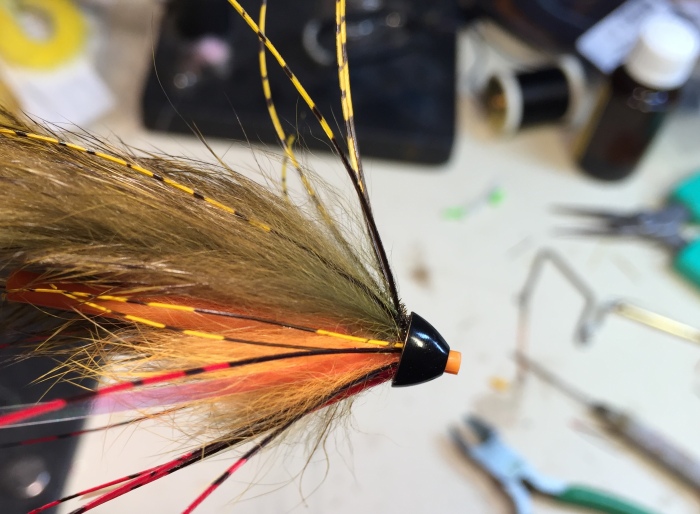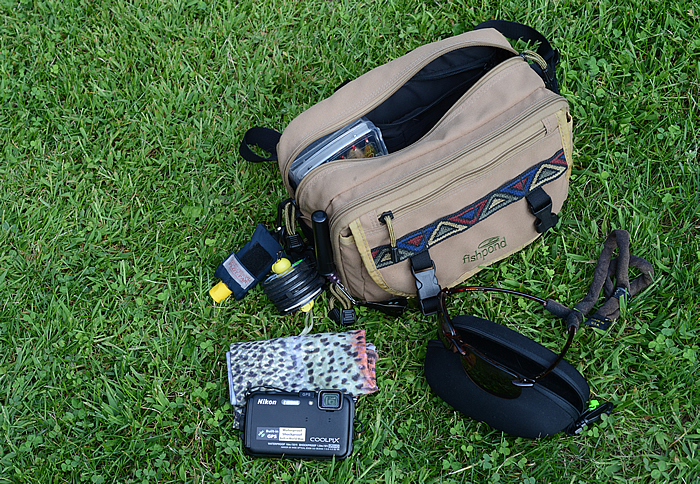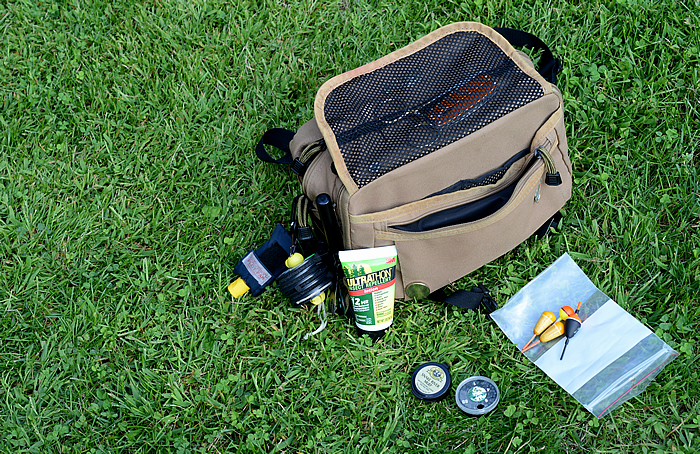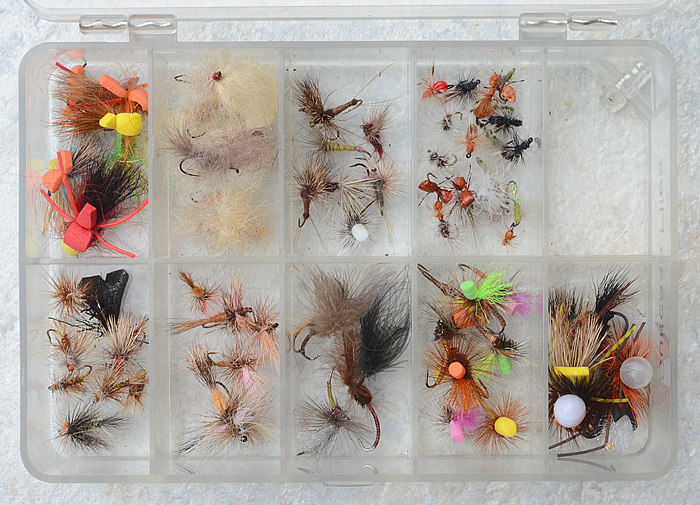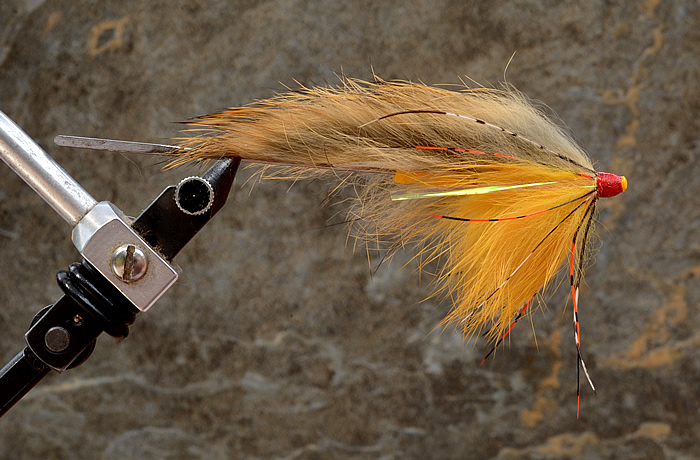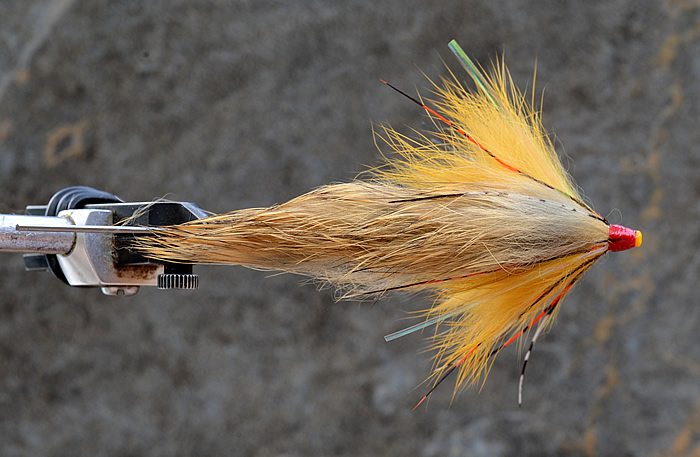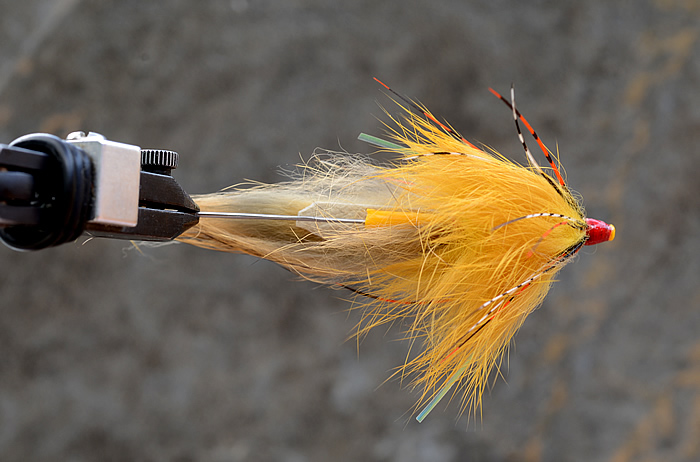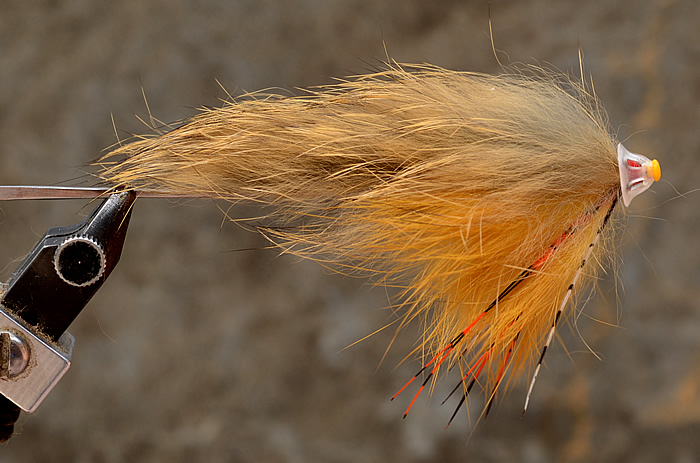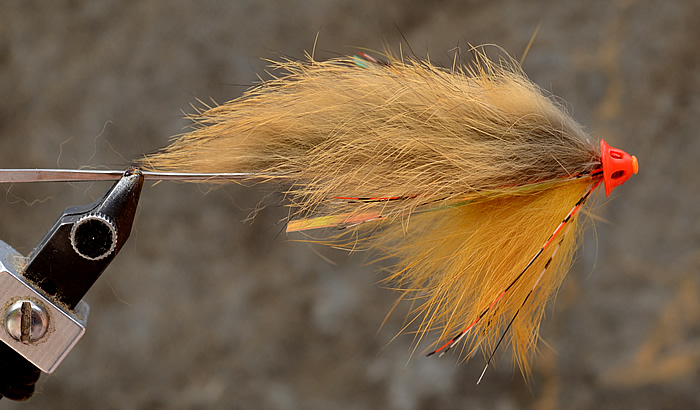Archive for the ‘Tube Flies’ Category
White Ghost – Tubefly
My last fly for the season, unless I find I am short something for spring trout. My adaption of the white ghost fly (for brown trout) on a tube. The wing is fox, with some amherst fibers

.
.
.
.
🙂
Fox Teardrop Fly SBS
Quick instructions, but note not all fur is equal, so you must adjust to the fur in hand.
Protube with a drop weight to push the fur up. I will also use a combination of bullet and drop weights.

This was a beautiful *long* sunburst fox from FoxyTails, and wanted to use its long length. The fur was well combed out.
On top is 3 strands of orange krystal flash, and there is a gap on the under side.

A short Fiery Orange with yellow tips is reverse tied in on top, with butts cut in taper.

I found this fur to short and thin, so I have added a “bottom”.

And then tied in reverse at top and bottom more fiery orange. I trimmed the butts, but I left a substantial bulk head to head form the shape.

Now, I begin to use saliva to shape and inspect the form.
** remember after each section, whip finish and cement.

Now, I am adding the finish deep red for the head, and again in a reverse tie.

To help, I am using small hair clips to hold the hair and fur back.

Help set the shape with saliva, and again whipfinish and cement the head.

Add in Amherst Center Tail. Use the trick to slide in multiple fibers under one wrap, and re-position to keep the head size small.

Again, shape, secure, whip-finish and cement.

Final finish – add Jungle-Cock, trim and cement.

Dried and allow to set.

.
Small Fly Fishing Kit
Fly-Fishing can be a bulky endeavour – rods, waders, boots, and hundreds of flies. So I have been working to reduce-reduce and reduce, so I can take a small kit with me on my travels. So here is my current answer:
- No Waders and Boots – so I must keep to the shore and the edges of water.
- Jacket and Hat – my regular Gore-Tex jacket.
- Fly-Rods + Reel: 9′ 5pc (9wt and 5wt) – will fit in my regular check in luggage.
. - Fishing Bag, as below.
Fishpond Bag – with the large back pocket holding:
- Maui Polarized Sunglasses
- Waterproof Camera
- Buff – with sunscreen and hat provides the protection I need from sun and insects
- Flies – Either tube bunnies or one box dry flies
On the bag’s side – floatant, tippet (2x-6x) and nippers.
On the bag’s front – a rare earth magnet – as previously reported a catch all convenience to hold flies on the stream as I can things around.
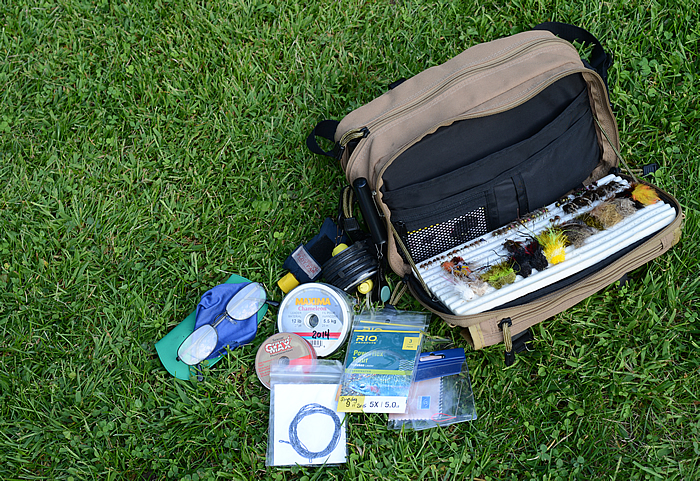
The most open pocket holds:
- Leaders for Dry Flies – 7.5′ (4x pocket water) and 9′ in (5x flat water).
- Leaders for Streamers – often stubby dry fly leaders, conditioned
- Furled Leader – 12′ Leader
- Seaguar Fluorocarbon Tippet – 3x (streamer) and 5x (nymph)
- Maxima Chameleon Tippet – 12lb
- 3x Glasses and Lens Cleaning Cloth
- Scissors, Needle with a thread loop
- Licenses
Streamers and Nymphs on the Foam Patch:
- Scuplzillas
- Conehead Muddlers
- Marabou Muddlers
- Couple of Crawfish
- Caddis Nymphs
- Red Squirrel Nymphs
- Rambo Nymphs
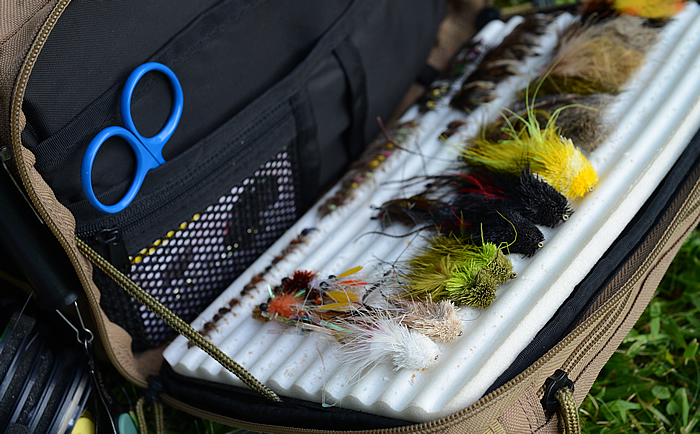
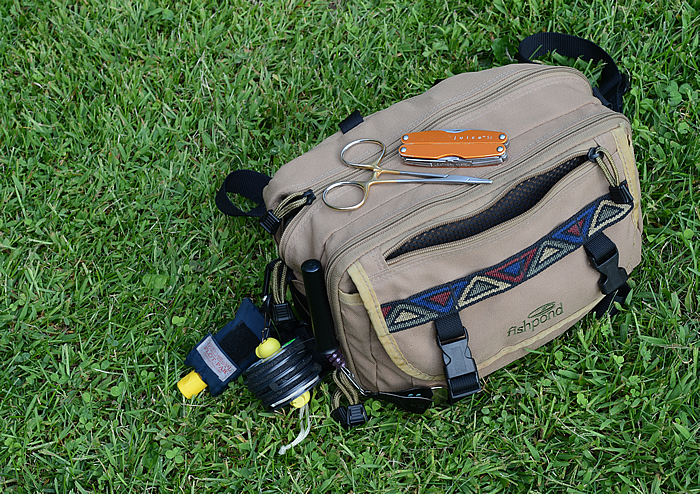
Moving to the outer edge, the front flap, we have tools used to support me when I need to release a fish:
- Foreceps
- Leahterman Multitool Juice S4 that includes pliers, siccors and a knife
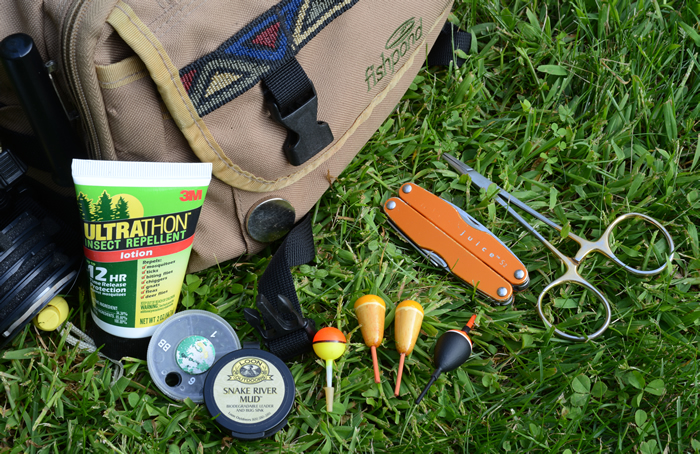
Under the flap are some stream side accessories
- Insect Repellent
- Weight – Tin Shot and Mud to treat nymph leaders
- Floats – either home made or “pin” style
- note picture shows the rare earth magnet
And in the one dry fly box, given I do not know what water I will be on, I keep soe generic, but favourite flies that span a wide range – starting in the top left and going clockwise – in varying colours and sizes:
- Ballon Caddis
- Usuals
- Comparaduns
- Ants and small CDC Dries, such as BWOs
- Spare
- Large floating Stoneflies
- Klinkhammers
- CDC Emergers
- Ausable Wulffs
- Stimulators
Is there anything missing, yeah, but right now the only thing I am wishing to add are:
- Spiders
- Caddis Popa
.
Tubefly – more play than for fishing
I have been away from the vise for sometime and been noodling in my head this idea of a Snaelda Shrimp on a tube fly. It took me 4 goes to get what I wanted.
I am not sure I will ever fish it, but it was something I wanted to create.
What is the recipe, in order of tie in on a black tube using black Danville Flymaster 6/0 thread:
- Polar Bear
- Krystal Flash – White Glow in the Dark x2
- Yellow, Orange and Black Schlappen feathers with most fibers stripped off, leaving just the tips (as feelers)
- Mono-eyes on a stick.
- Yellow, Orange and Black Schlappen collars (could be thinner).
- Silver Veniard Tinsel – Medium.
- Thread Body.
- Veniard Varnish – 6 coats.












































